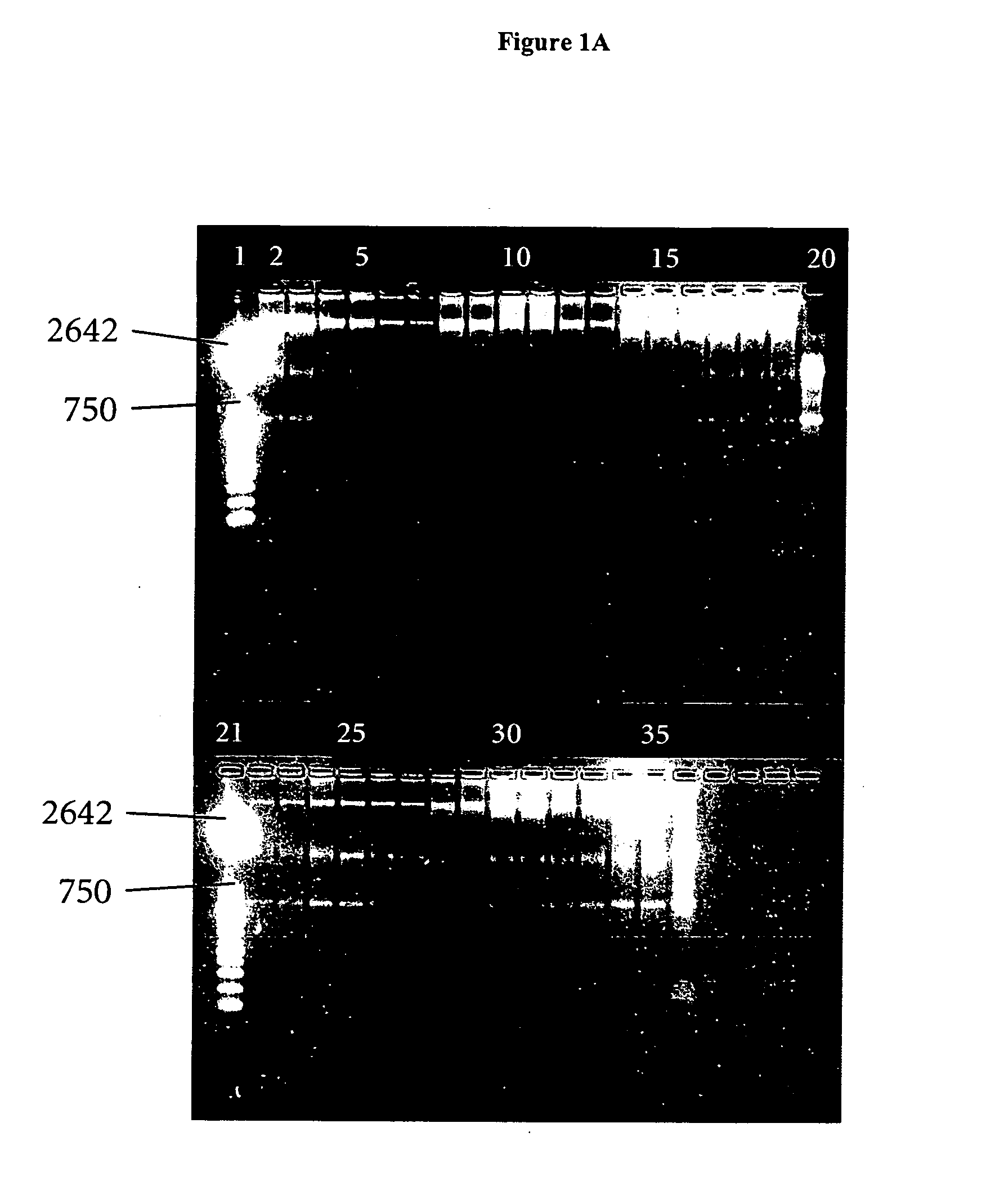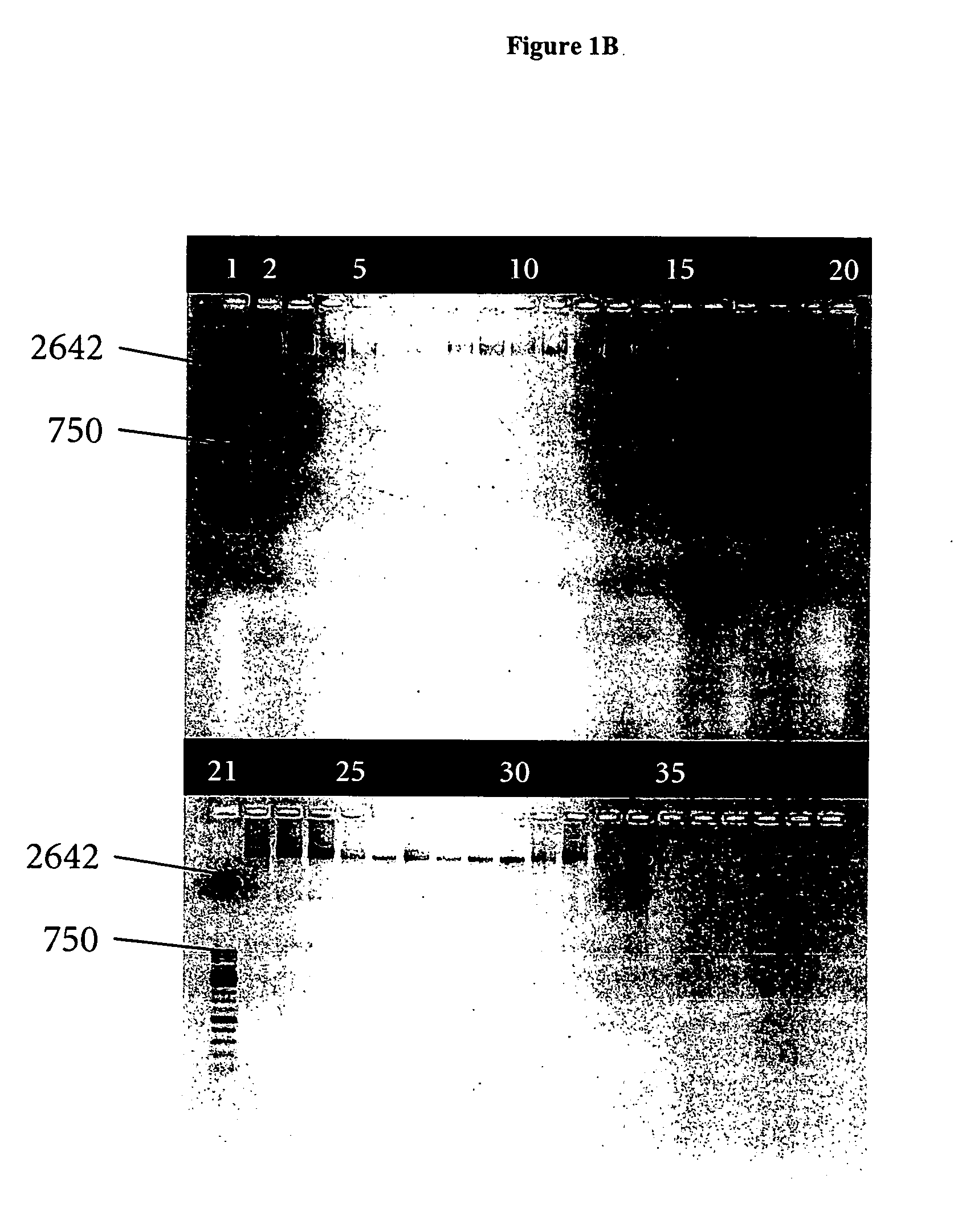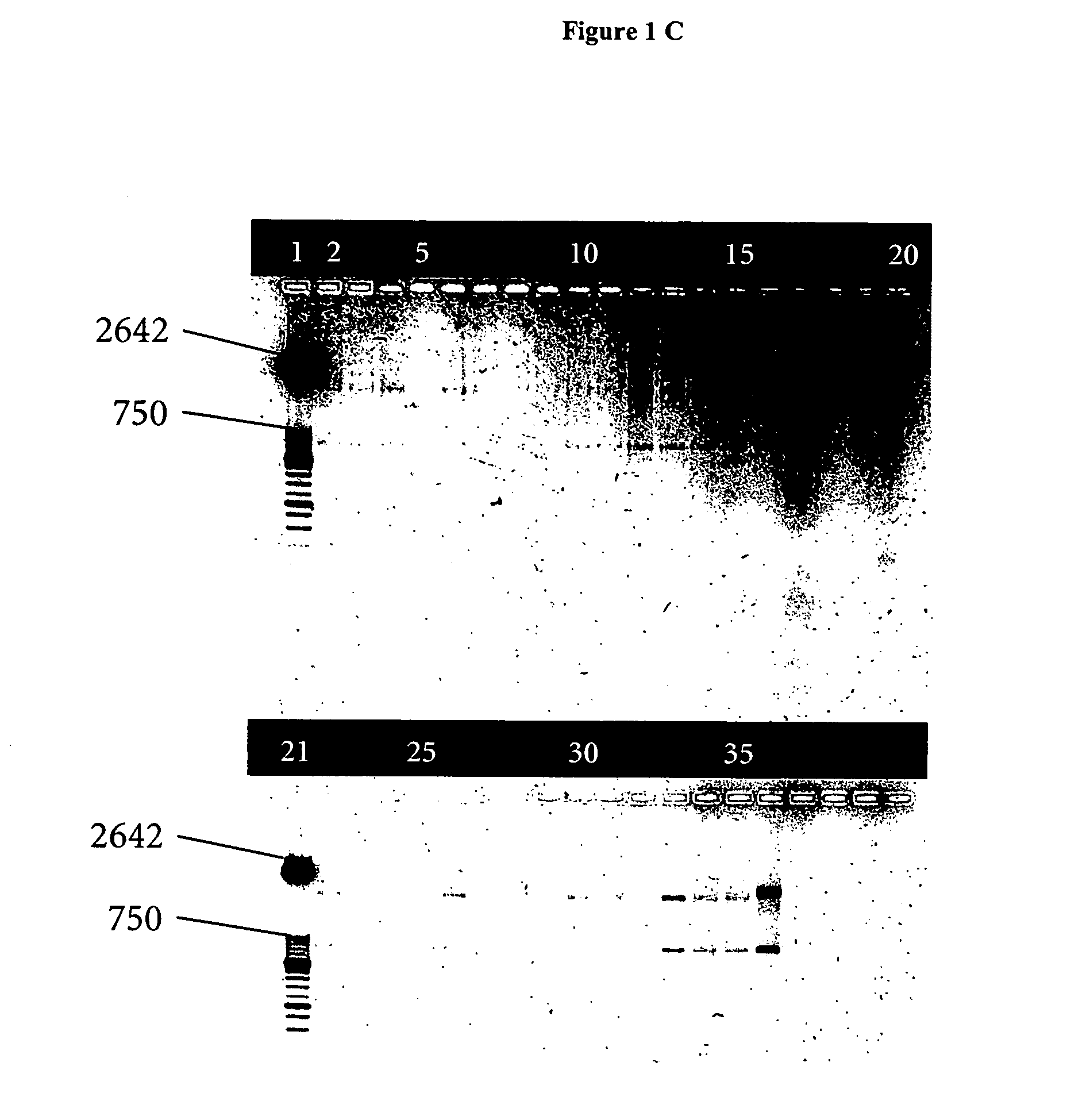Nucleotide sequence for assessing transmissible spongiform encephalopathies
a spongiform encephalopathy and nucleotide sequence technology, applied in the field of nucleotide sequence for assessing transmissible spongiform encephalopathy, can solve the problems of all objects that come in contact with brain material at risk of getting contaminated with contagious material, and the state of the art regarding marker molecules is confined to artificial subjects
- Summary
- Abstract
- Description
- Claims
- Application Information
AI Technical Summary
Benefits of technology
Problems solved by technology
Method used
Image
Examples
specific embodiments
Example 1
Blood Samples (Cattle)
[0074] A first set of samples from cattle, designated “A1”, comprised 10 individuals which suffered from a natural infection with the BSE inducing infective agent (field cases). By way of immunological detection of PrPsc in brainstem (obex) tissue with a officially approved post mortem test a positive test result was established for each A1 animal.
[0075] A further set of blood samples, designated “A2”, was obtained from experimentally inoculated animals. These animals were infected by feeding with brain homogenate (100 g or 1 g) obtained from cattle which were naturally infected with BSE. Two samples (“A2-g” and “A2-h”) were from inoculated animals without any sign of BSE. Two samples (“A2-a” and “A2-b”) were from animals which showed definite signs of BSE. Three samples (“A2-c” and “A2-d”) were from animals which showed possible signs of BSE.
[0076] Two healthy animals of the negative (i.e. not infected) control group (designated “B2”) were include...
example 2
Nucleic Acid Preparation
[0079] RNA extraction from whole blood samples was performed using the MAGNAPURE LC intrument and either (a) the MAGNAPURE LC mRNA isolation kit 1 for blood and blood cells (Roche Diagnostics GmbH, Mannheim, Applied Science catalogue number 03 004 015), (b) the MAGNAPURE LC RNA isolation kit High Performance (Roche Diagnostics GmbH, Mannheim, Applied Science catalogue number 03 542 394), (c) the MAGNAPURE LC total NA isolation kit—large volume (Roche Diagnostics GmbH, Mannheim, Applied Science catalogue number 03 264 793) or (d) MAGNAPURE total NA Isolation kit (Roche Diagnostics GmbH, Mannheim, Applied Science catalogue number 03 038 505). RNA and total NA were isolated according to the instructions of the manufacturer.
[0080] Following purification an aliquot of 5 μl of each preparation (corresponding to 5% of the respective total preparation) was electrophoresed on a 0.8% agarose gel and stained with SYBR Green® I. FIGS. 1 A, B, C, and D shows exemplary a...
example 3
Pre-Screening for BSE-Specific Marker RNAs and Analysis of Putative Marker Sequences
[0081] Light Cycler® RT-PCR was performed using the LC Fast Start DNA MasterPlus SYBR Green® I kit (Roche Diagnostics GmbH, Mannheim, Applied Science catalogue no. 03 515 869) and a LIGHTCYCLER 1.2 instrument according to the instructions of the manufacturer.
[0082] A first round of screening attempted the detection of BSE-specific RNA sequences in whole blood samples of BSE-infected and not infected cattle. Amplified sequences were characterized and optimized primers were designed and tested. Among a larger collection of primer pairs tested the two oligonucleotides LTR895for and LTR895rev according to SEQ ID NOs: 3 and 4 were characterized in first RT-PCR experiments.
[0083] In order to provide positive controls, the target sequences for the two primers were cloned in a plasmid vector (“control plasmid”) in an arrangement such that PCR of the control plasmid yielded an amplified fragment of the pla...
PUM
| Property | Measurement | Unit |
|---|---|---|
| fluorescent | aaaaa | aaaaa |
| fluorescence resonance energy transfer | aaaaa | aaaaa |
| fluorescence emission | aaaaa | aaaaa |
Abstract
Description
Claims
Application Information
 Login to View More
Login to View More - R&D
- Intellectual Property
- Life Sciences
- Materials
- Tech Scout
- Unparalleled Data Quality
- Higher Quality Content
- 60% Fewer Hallucinations
Browse by: Latest US Patents, China's latest patents, Technical Efficacy Thesaurus, Application Domain, Technology Topic, Popular Technical Reports.
© 2025 PatSnap. All rights reserved.Legal|Privacy policy|Modern Slavery Act Transparency Statement|Sitemap|About US| Contact US: help@patsnap.com



